Across the Metaverse: My trip though VR social platforms
I tried out VRChat, Meta Horizon Worlds, and Rec Room. Each one makes a different case for the future of social gameplay.

There are a lot of reasons to pick up a virtual reality headset, and one of the strongest use cases might be virtual world platforms. The idea of wandering around digital recreations of movie sets, real-life places, and completely unique spaces with friends is compelling, especially with the extra layer of immersion from virtual reality.
I've spent a few months trying out three of the most popular platforms: Meta Horizon Worlds, Rec Room, and VRChat. Each one was seemingly built for a different purpose and audience, and each one presents a different vision for online social spaces and expressing yourself. They all have one thing in common, though: there's always a McDonalds.
The basics
Virtual world platforms have two main components: simulation and social interaction. You get a bunch of worlds to jump between, either made by the platform or by a third-party creator. There's also some ability to customize your appearance. Second Life is cited as one of the clearest early examples of a virtual world platform, but there are a lot of games that could reasonably fall under that definition. If I think back to my early experiences with online games, Minecraft was pretty close to that, but there wasn't really a shared social network across different servers.
The second main component is social interaction. Virtual world platforms, especially the modern iterations, are full-blown social media networks. You can meet people, talk to them, and add them to friend lists for easy meetups and communication in the future. With most of these platforms, you can get a group together and jump between worlds, like a bus of tourists making stops all around a city.
Thankfully, you don't have to be social, at least in the three platforms I tested. You can run around public worlds with your microphone off, or you can join private instance worlds that don't have any other people. I'm an introvert with a limited "social battery," so I have spent some time in public spaces talking to people and soaking up the atmosphere, but I've also checked out many worlds alone on my own time.
Horizon Worlds: Baby's first social VR
Shortly after setting up my Quest VR headset, I started my metaverse journey with Horizon Worlds. It's the virtual worlds platform owned and operated by Meta (formerly Facebook), and you may have seen Mark Zuckerberg's infamous selfie captured in the game. That image, along with other screenshots from Horizon Worlds, has been used repeatedly as the butt of jokes about Meta dumping billions of dollars into VR hardware and software.
Horizon Worlds functions as the default VR social platform on Quest headsets. The game is highlighted in the main explore page, there's a list of recent worlds alongside your installed games and apps, and the avatar you create for your Quest account applies to Horizon Worlds (and vice-versa). Basically, this is the Wii Sports of the Quest headset.
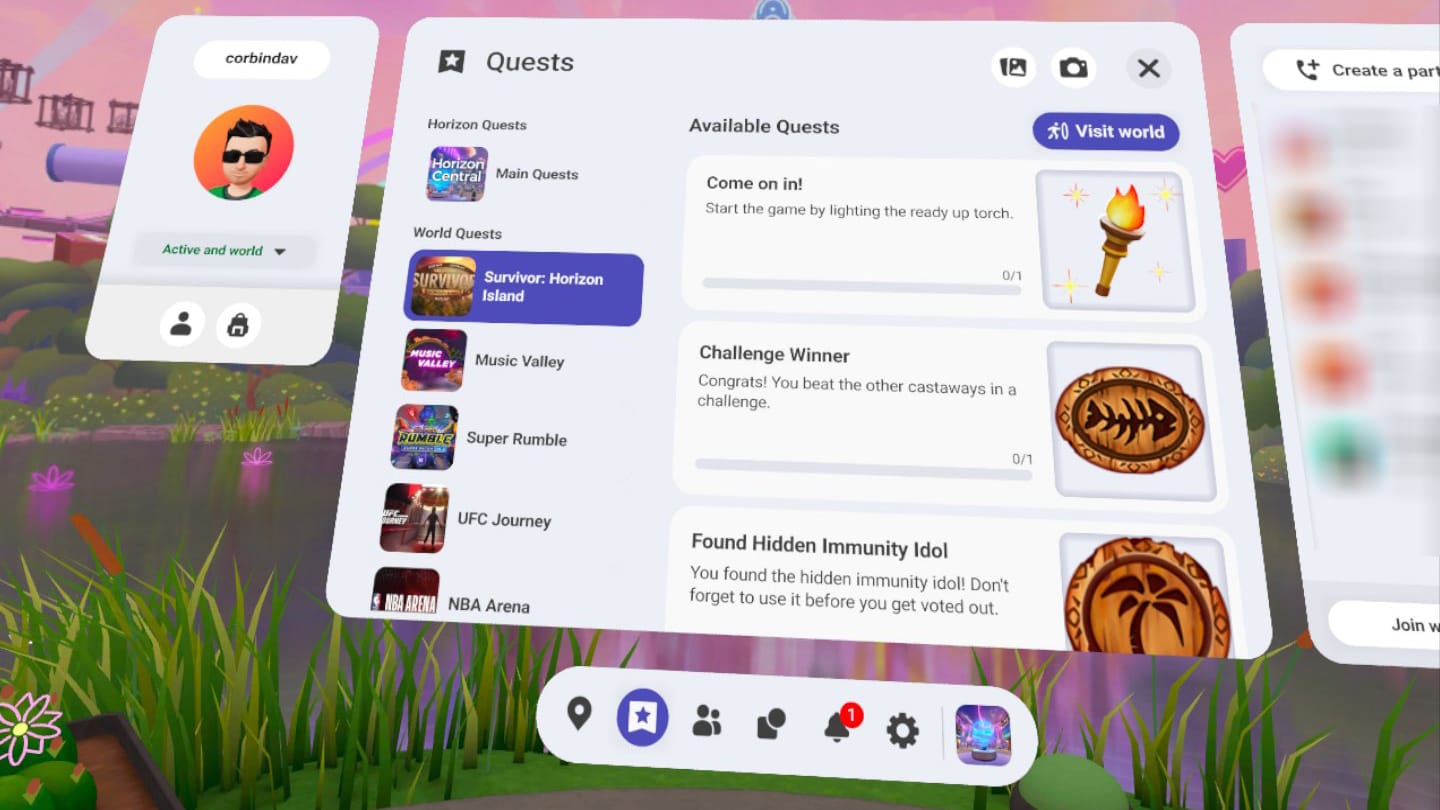
Horizon Worlds starts with creating your avatar, if you haven't done so already, from a list of body options, clothes, and accessories. It's a bit like the character creator in your favorite RPGs (or Mii Maker, to go back to the Wii). Some of the clothes and accessories are micro transactions, which is kind of funny.
There's a main hub world with portals to other places, stylized like an outdoor mall-type area, or you can just browse worlds from the main list. Some of the worlds are created by Meta, and some are built by other people using the platform's rudimentary creation tools. There's also a home world styled as a large apartment, with the ability to invite friends over.
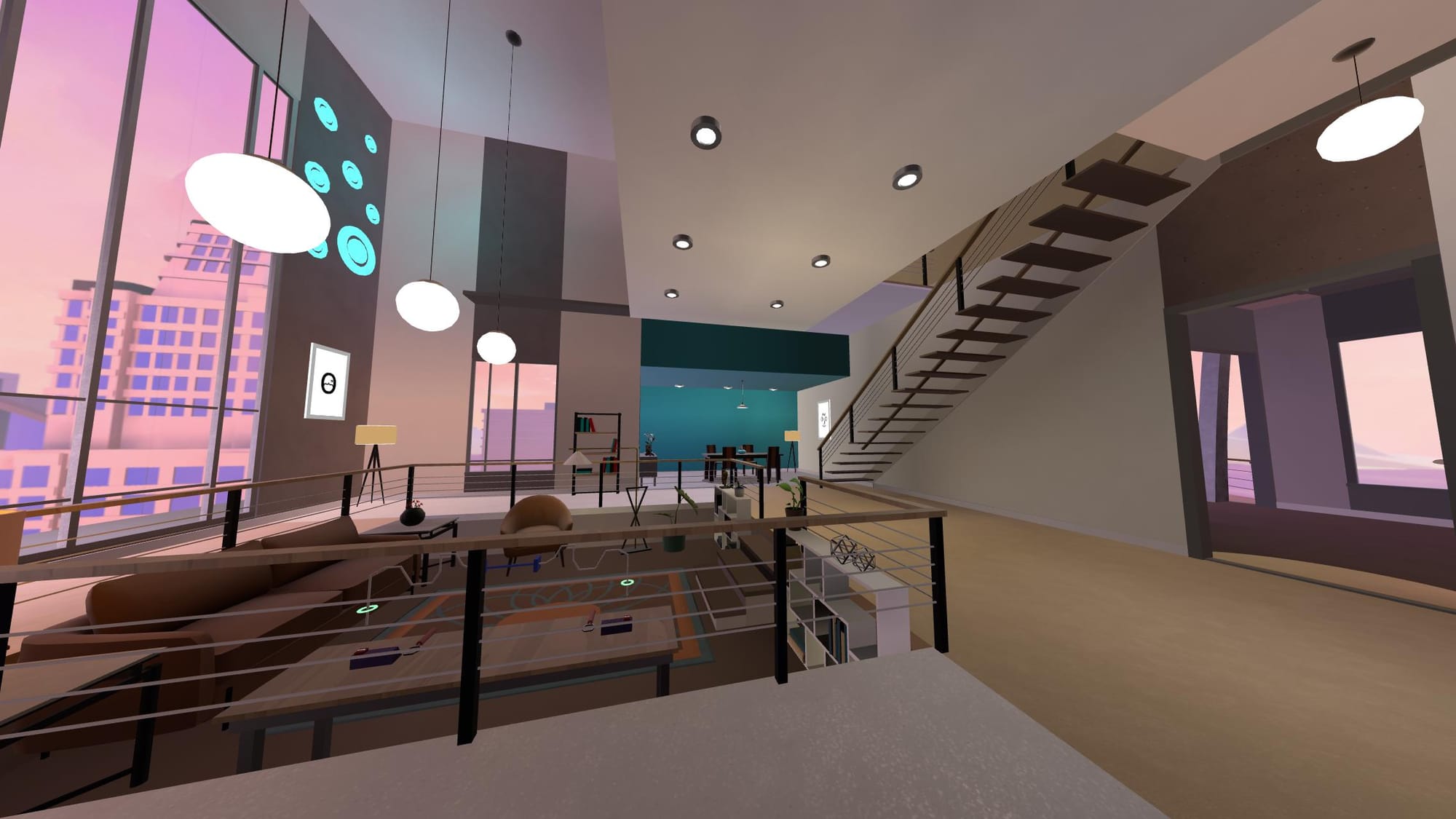
One of the core complaints with Horizon Worlds is that it can feel very soulless and corporate, and that's definitely true at times. There are a few worlds set up as promotional tie-ins for movies, TV shows, or events. The latest one is Survivor: Horizon Island, coinciding with the premiere of Survivor's 46th season on CBS. Some of Meta's other worlds can feel empty, seemingly more as proof-of-concept demos than anything else.
I can understand the game worlds being lackluster, though—it's better for Meta and its budding ecosystem if you buy a standalone game like Premium Bowling or Fruit Ninja through the app store instead of just playing the worse equivalents in Horizon Worlds. There are a few worlds built with Meta's newer tools, but I haven't spent much time in those.
There are a lot of children with Quest VR headsets, and because Horizon Worlds is the default VR social app on those headsets, there are a lot of children in Horizon Worlds. The official minimum age to play is 13 years old, but I have definitely heard people in public worlds that sound younger than that (note to the FBI: I am not talking to the children). You can mute them, or create a private instance, or try one of the worlds marked for adults only. The adult worlds typically use height and arm span measurements to automatically block children—sorry, short kings and queens.
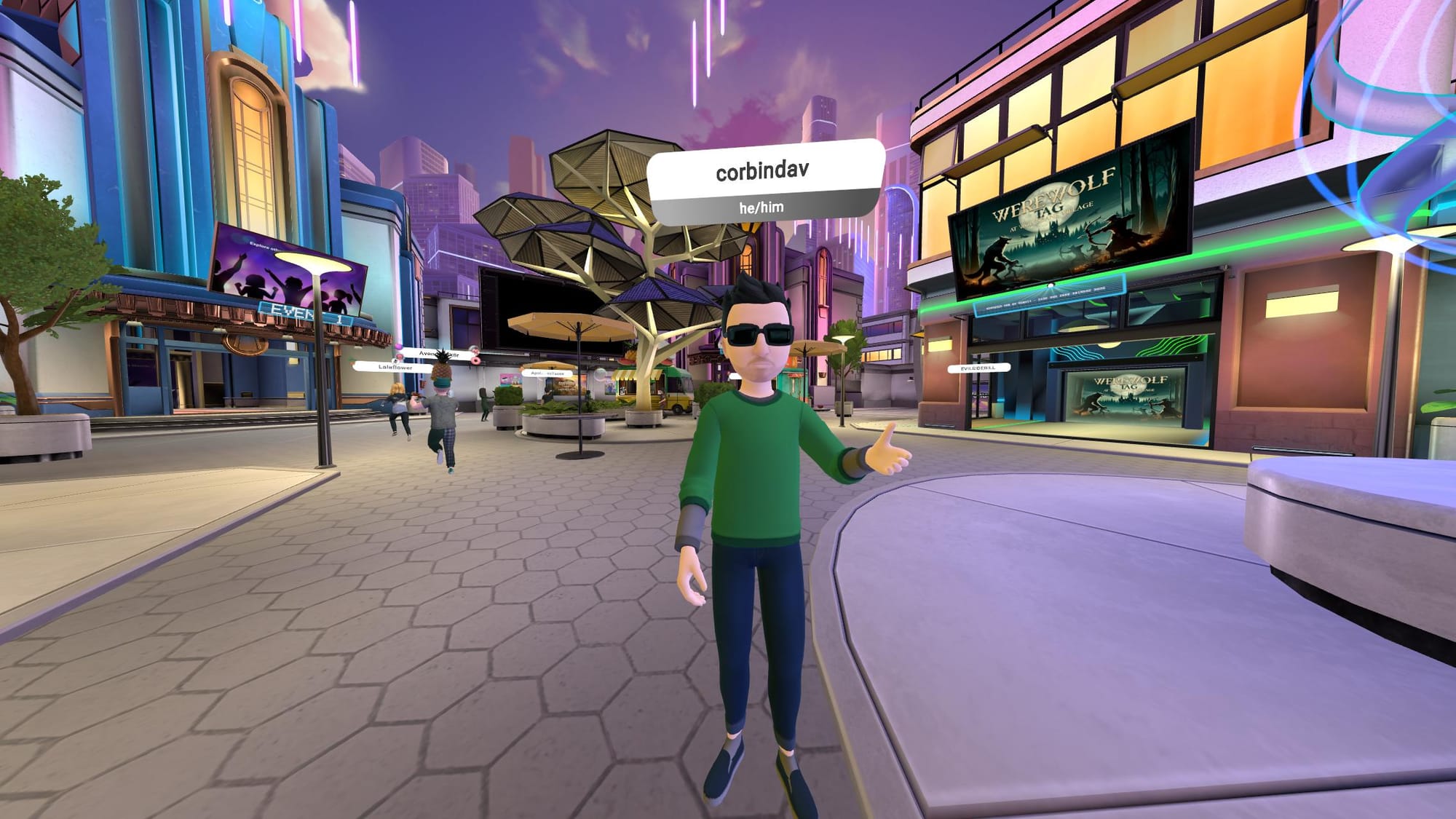
The user-created worlds aren't all that exciting, and the top worlds make it clear that Horizon Worlds is densely populated with teens and pre-teens. The most popular world as I write this is "VR Classroom," followed closely by "Bonnie's Revenge"—Bonnie is one of the animatronics from the Five Nights at Freddy's games.
The funniest world I found might be a recreation of a McDonald's restaurant, called "Metdonald's," complete with a Play Place and a large trampoline. The world usually has at least a few children pretending to take orders from behind the counter. Did any dystopian fiction predict children roleplaying minimum-wage jobs in virtual reality?
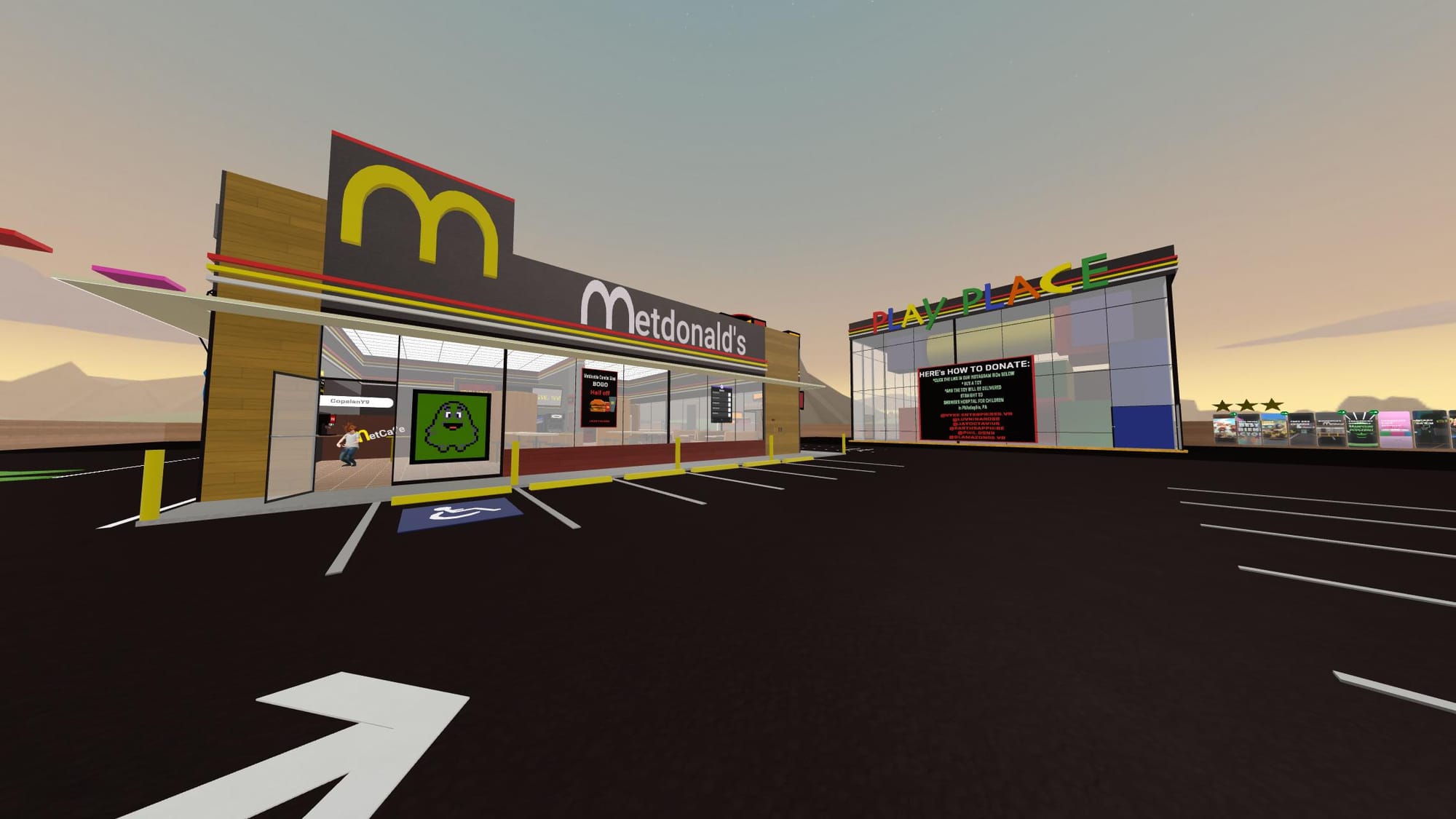
Horizon Worlds, like many other online games, creates more instances of a given world as needed to fit everyone. I'm not sure what the maximum player count can be for a world, but Meta's own documentation recommends 8-12 people as the upper limit. You can also create a new instance of any world with a few clicks, allowing you to roam around (alone or with a friend group) without running into random online players.
I haven't spent that much time in Horizon Worlds, because VRChat is a significantly better experience once you get over the learning curve (more on that later), but it does still have some utility as a "baby's first" VR platform. It's pretty easy to figure out—as proven by all the children—and I didn't run into any performance issues or crashes. It's fine for basic social activity and simple games, but that's about it.
Rec Room: Come one, come all
The next platform I tried was Rec Room, which I did play years ago on my Windows Mixed Reality PC headset. Rec Room is much older than Horizon Worlds, dating back to 2016, but the core concepts are all the same. You can meet and talk to people, travel between worlds created by Rec Room and independent developers, and play some basic games.
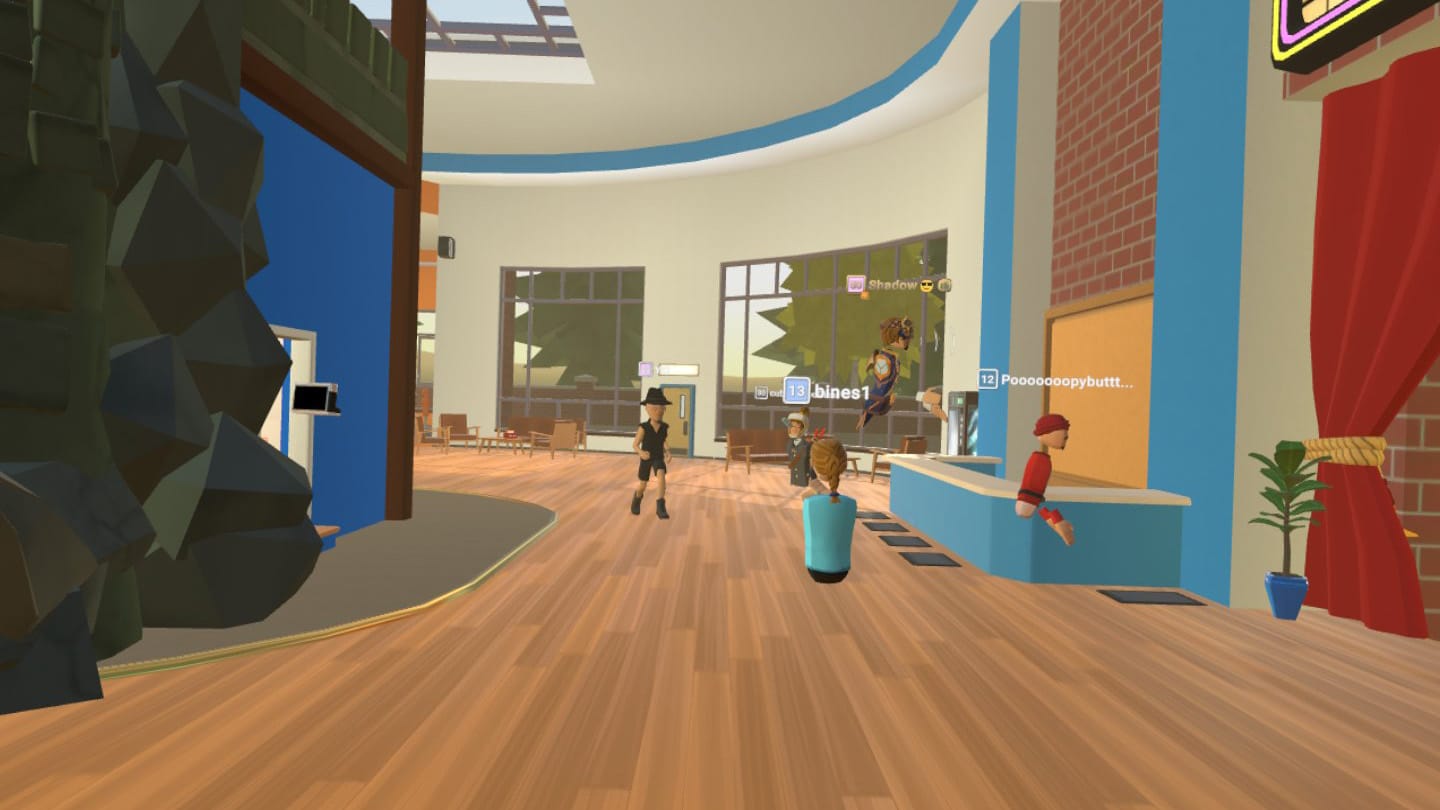
The main hub world in Rec Room, and most of the other areas created by the main developers, are designed to look like a gymnasium or YMCA-style club space. I don't particularly love the aesthetic, but it's at least a more unique visual style than Horizon Worlds. There are some worlds that mirror real-life recreational sports, like tennis, basketball, and dodgeball, as well as more typical social VR games like paintball and PvP sword fights. There's also a McDonalds world.
The best selling point for Rec Room might be that it's on a lot of platforms with fully supported cross play. It's available on PC VR, Meta Quest headsets, and PlayStation VR. You can also play it as a normal non-VR game on iPhone, iPad, Windows, Xbox, and PlayStation 4/5. If you have friends split across different platforms, including some without VR headsets, Rec Room might be the best option for playing together.
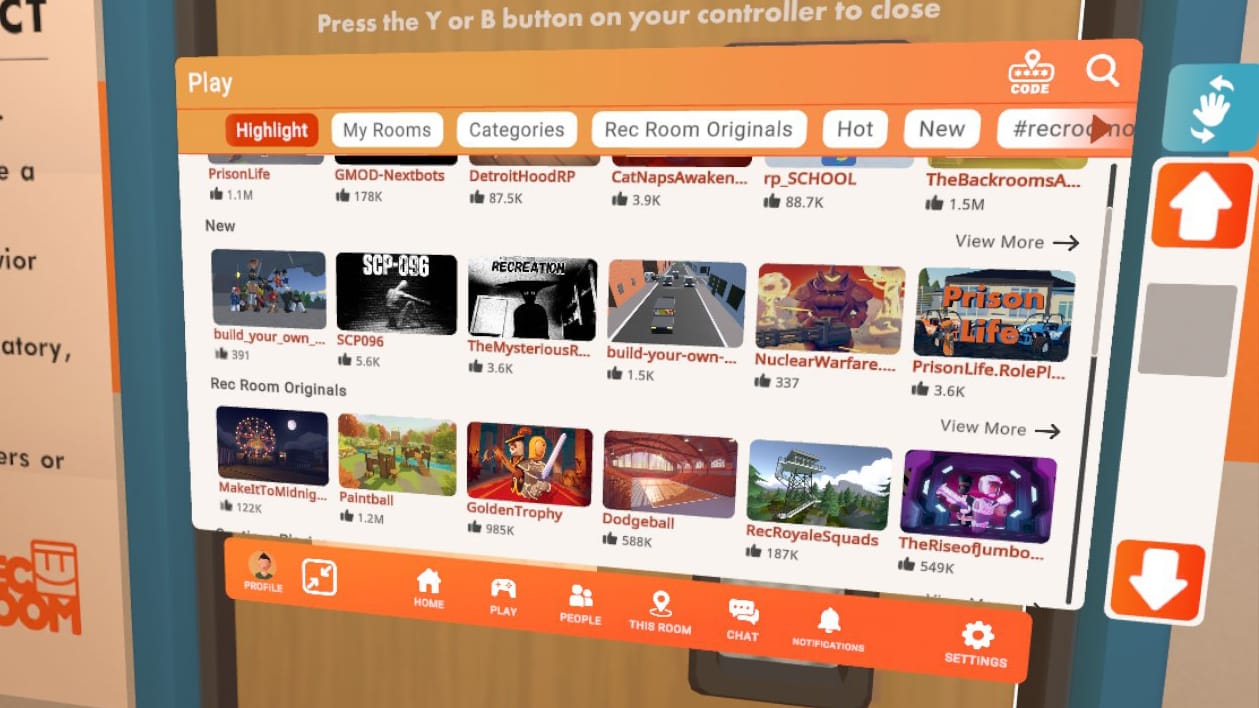
Rec Room is an interesting middle ground between the basic features of Horizon Worlds and the more complex VRChat, but that's the reason I've played it the least. I also experienced frequent framerate dips on my Quest 3 headset, and just like Horizon Worlds, you will run into a lot of children unless you stick to private instances.
VRChat: The absolute best
VRChat is fantastic. It's an incredible technical demonstration of virtual reality, and beyond that, it's just really fun. I've spent much more time in VRChat than Horizon Worlds or Rec Room because there's so much stuff, and it's much more intuitive once you get the hang of it.
VRChat has the same basic concepts as the other platforms: you can meet and talk to people, travel between official and community-made worlds, and so on. It's available on PC VR and Meta Quest headsets, and you can play it outside of VR on Android devices or Windows. That's not quite as cross-platform as Rec Room, but still impressive.
The first feature that sets VRChat apart is the avatars. There's not a limited list of body shapes, clothing, and accessories like other platforms—the avatars are completely custom 3D models built with the Unity SDK. There are many different avatar worlds available in the world search that act as galleries, where you can click an avatar to instantly switch your appearance. You can save avatars to a list for easy access later, too. I found one world that accesses a database of over one million avatars, and I spent hours with friends going through search results.
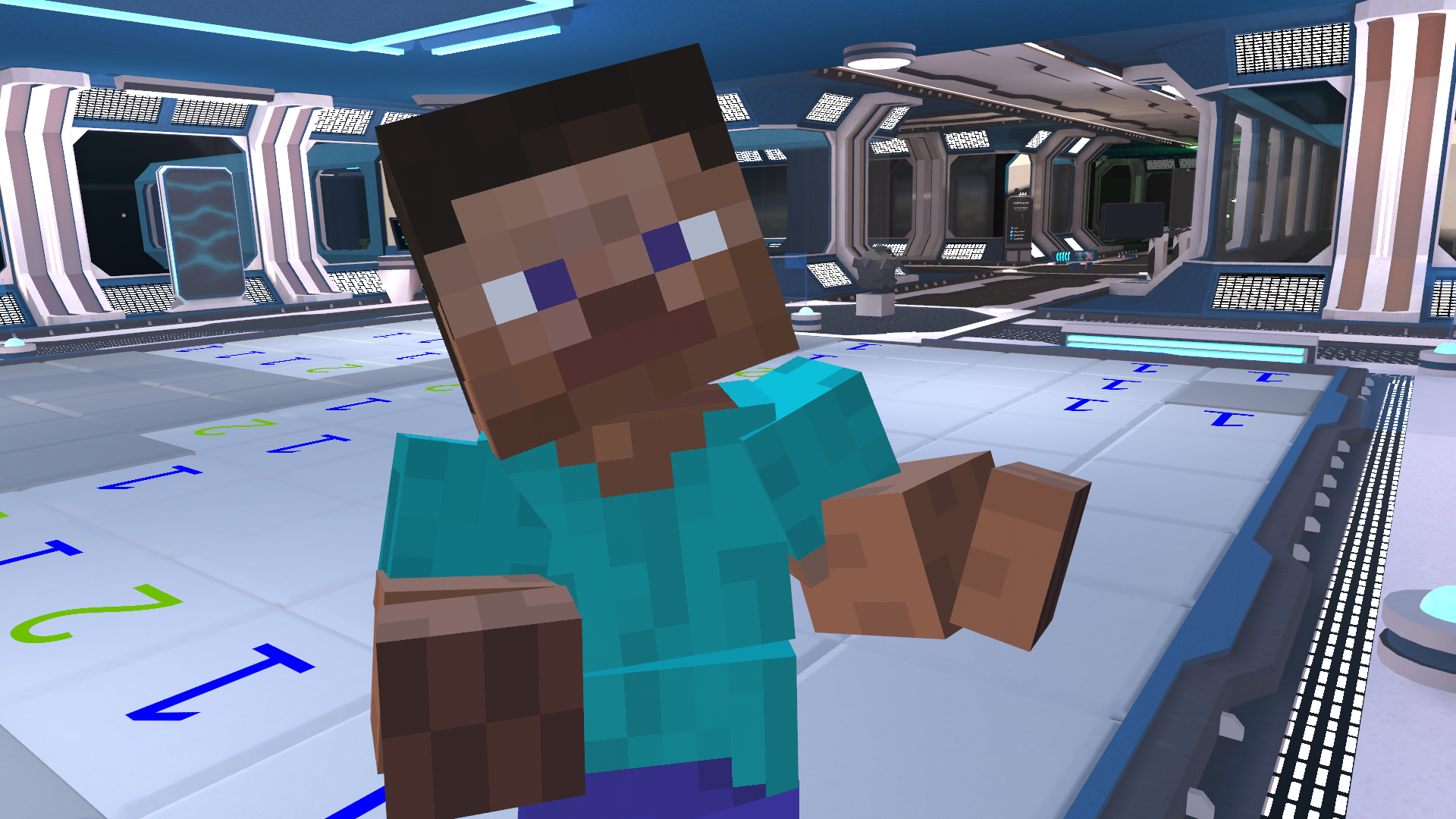
There are avatars for literally everything. You can be R2-D2 from Star Wars. You can be a duck with a break dancing ability. You can be Figment from the Journey into Imagination attraction at Epcot in Walt Disney World. You can be a Pikachu Pokémon card. You can be Steve from Minecraft. You can be Bob from Bob's Burgers. You can be a 1969 Ford Boss 302 with the ability to let other people hop inside your cabin as you drive around. Some of them are too complex to render on Quest headsets, but not all of them, and a fallback is used if someone else has an incompatible avatar.
Some avatars are static or only have basic tracking, but others can match the (estimated) movements of your arms and legs, and some have mouth movements or other effects synchronized to your microphone input. Eye tracking is also supported, assuming your VR headset and avatar can do it—my Quest 3 doesn't have eye tracking, but it does work on the Quest Pro and other headsets. It can be a bit surreal at first to watch someone with a more advanced avatar, but you get used to it after a while. Importantly, many of these avatars are completely free to use (partially because many of them violate intellectual property), which makes the few dollars to buy a new shirt in Horizon Worlds or Rec Room seem even more silly.
VRChat has a fantastic mix of worlds: some are for socializing, some are games, some are theaters for pirated movies, and some are just 3D environment demonstrations. The worlds are built using Unity, just like the avatars, and many of them rival or surpass the quality of standalone published VR games. You can also set any of them as your home, and there are a lot of smaller worlds designed for that purpose.
Some of the best worlds I've found include a mini golf course, a recreation of a Super Kmart store, a kitchen cooking game, a recreation of the Enterprise's bridge deck from Star Trek: The Next Generation, and a cooperative Minesweeper game. The best VRChat worlds are so far ahead of what's available in Horizon Worlds or Rec Room that they aren't even comparable. There is also a McDonalds, because there always has to be a McDonalds.
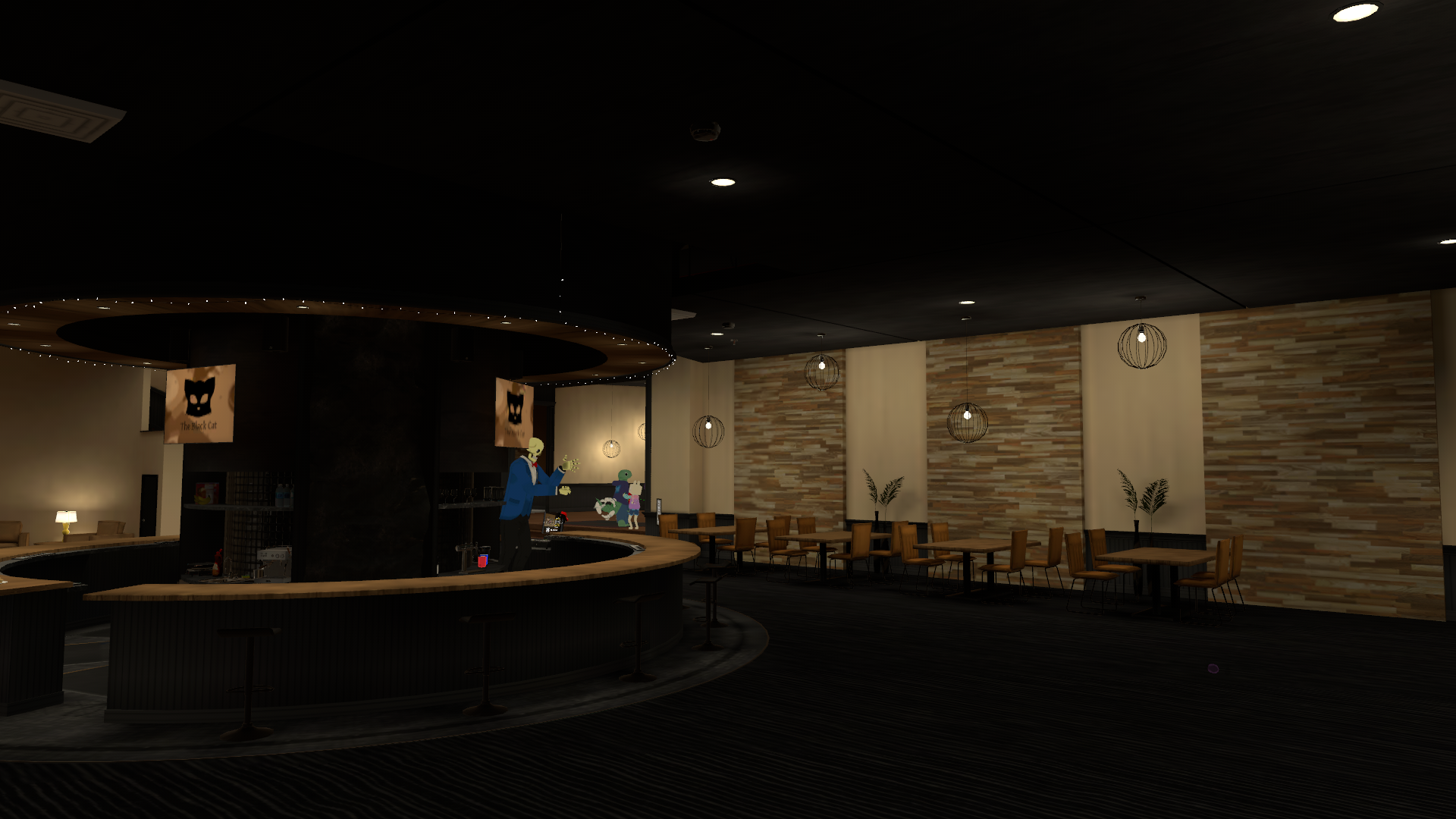
VRChat on the Meta Quest headset has impressive performance, at least once the world and everyone's avatars have loaded, and there's an option to use hand tracking instead of holding the physical controllers. The hand gestures aren't perfect—the controls for walking and turning seem like driving a forklift—but I use the hand tracking mode as much as possible. It's great to put down the controllers when I'm only talking, and if your avatar has hands with fingers, you can be more expressive. Yes, that includes giving people the finger.
The cool part is that VRChat can scale based on your available hardware. If you only have a Quest headset and play in standalone mode, you can't do everything, but there are a lot of worlds and avatars (plus the optional hand tracking). If you have a powerful gaming PC, you can visit more detailed worlds and view more complex avatars. If you have a gaming PC and external body sensors, you can have full body tracking.
Being an introvert, I wasn't all that interested in the "chat" in VRChat at first, especially with random people. Social interaction is still not something I want to do for hours on end, but the social etiquette in most VRChat worlds isn't quite as rigid as in real life. It's normal to walk up to a group having a conversation and just stand there for a while until you have something to say, and drifting between groups as a quiet observer is also generally fine. You can click on people to see their public profiles, which can give you something to talk about—I wish I had that ability in real life. Importantly, VRChat has far more adults and far fewer children than Horizon Worlds and Rec Room, and that alone makes it a better experience than other platforms.
There's one more defining quality of VRChat that I need to mention: the furries. There are people with furry avatars everywhere, and they're some of the most advanced avatars in the game. Furries have made many of the worlds available in VRChat (like the previously-mentioned Minesweeper world), and there are worlds designated as furry hangout spots. But why are there so many of them?
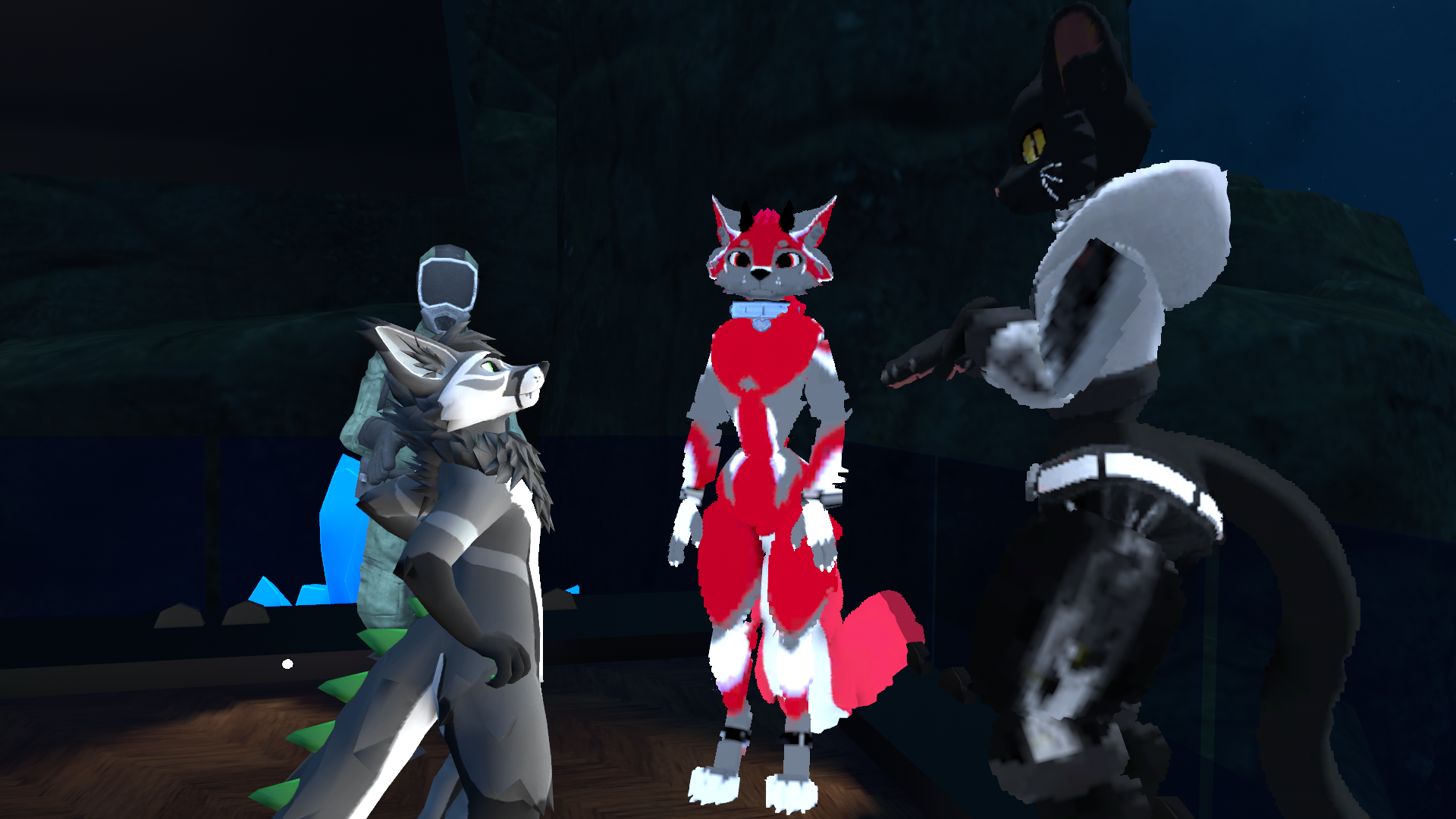
There's a popular idea in the tech industry that "if you build it, they will come." The concept is that if you build a fantastic hardware or software platform, you're guaranteed to be successful. I've seen that fail time and time again, but for VRChat, it actually worked. When there's a sizable market of tech-savy people who identify as anthropomorphic animals, and you build a platform that allows them to closely match that identity in virtual reality social settings and games, you're going to have a lot of users.
You've probably seen real-life photos of people in the furry community wearing costumes that match their character. Most people don't have the skills to make those fursuits, so there's an industry of costume designers who are commissioned to create personalized fursuits. I found out while talking to someone in a furry world that there's an identical market for VRChat avatars, with 3D artists taking commissions to create customized avatars based on a given design. That's really cool!
Even though I'm not a furry, I ended up spending a lot of time talking in the furry hangout worlds, because the people there are generally nice and welcoming (also, children usually stay out). I was already aware of the meme that the tech industry is filled with furries, and sure enough, I have met a few engineers and IT people in those worlds.
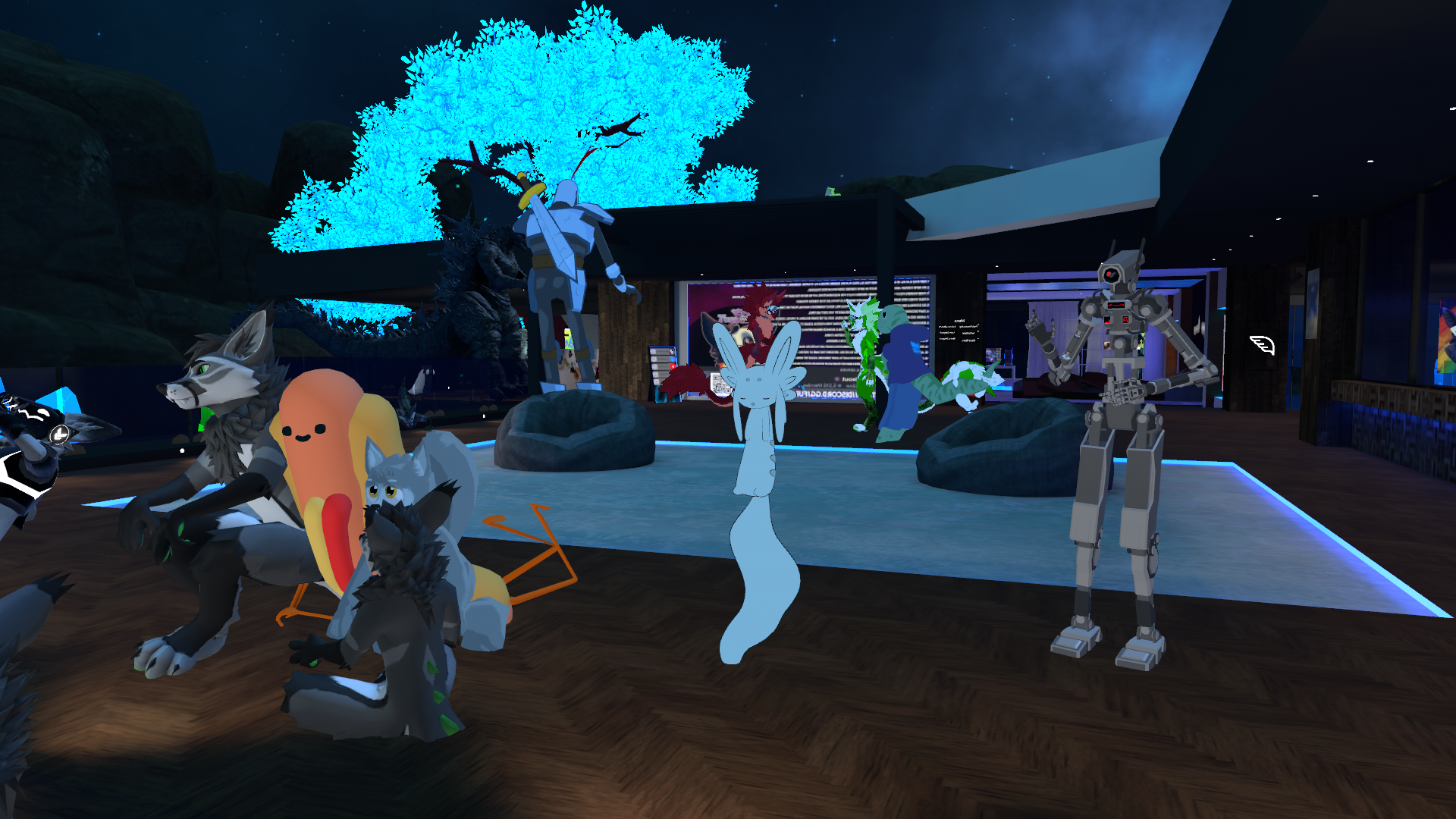
The concept of a virtual reality space where your appearance can fully match your online identity is great for other groups, too, it's just that furries are the most visible examples. There are a lot of transgender people in VRChat, complete with a 'Trans Academy' world that acts as a social space and a place for voice training classes.
The case for the Metaverse
Each virtual world platform feels like it's making a different argument for the future of social communication and gaming. Horizon Worlds, much like the company behind it, feels empty and commercialized. Rec Room is something closer to a universal social and gaming space, but it's still limited by the tools and younger target demographic. VRChat caters towards a tech-savy older audience, while still being accessible enough that a $200 Quest 2 and a slight learning curve can give you a passable experience.
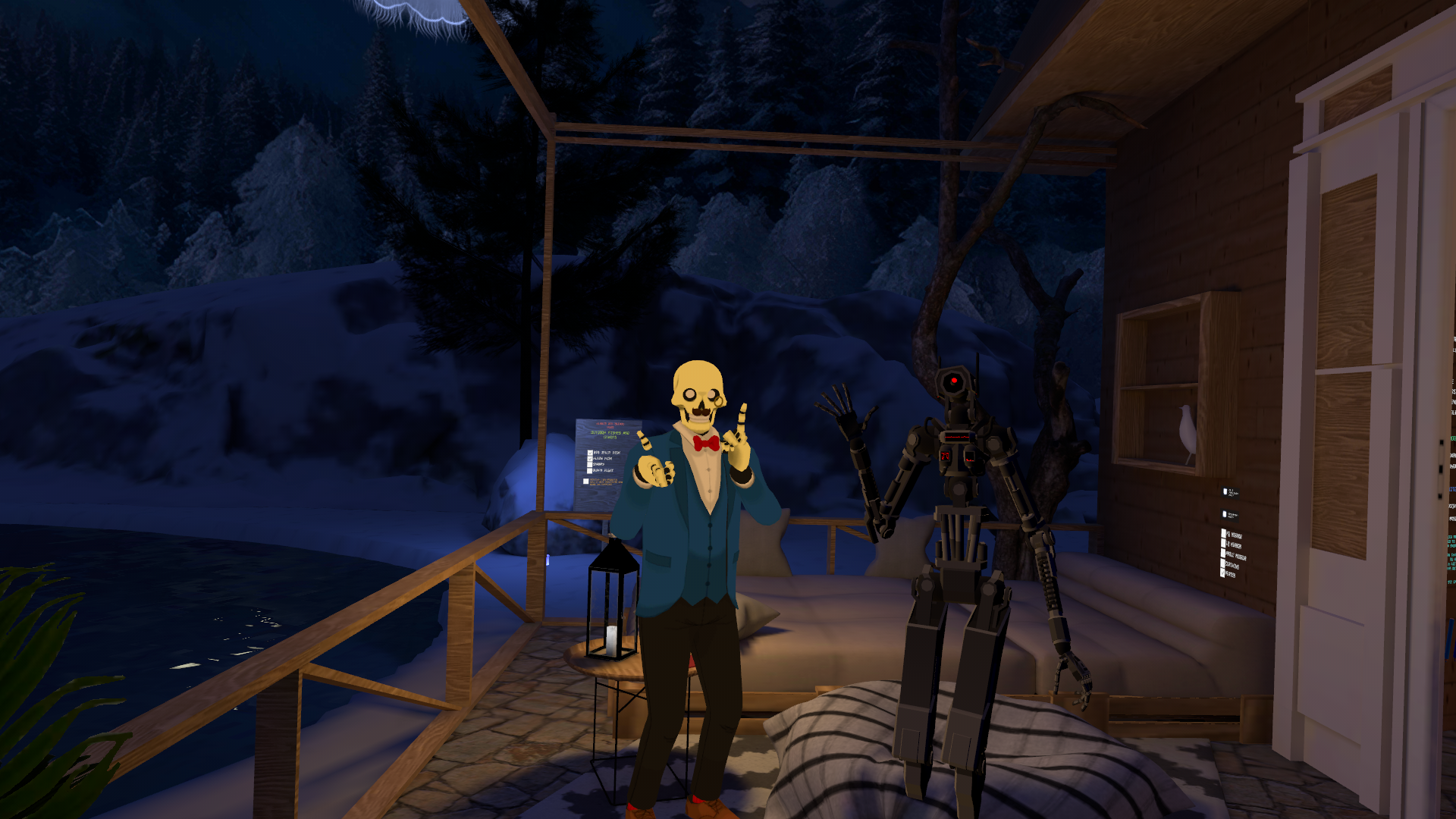
I'm still not someone who wants to spend hours and hours in VRChat—some people even sleep in there—but now I understand the appeal. It's more immersive than a text chat or Discord voice channel, and at least for me, it doesn't have the same social pressure as real-life public settings. There's so much to do, and the possibilities for personalization are endless.
The "metaverse" is real, but it's not some far-off future, or just a meaningless buzzword, or a money pit for Mark Zuckerburg. It's a video game densely populated by furries.




